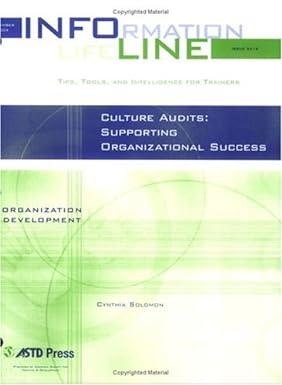Question
In both activity-based cost (ABC) systems and time-driven activity-based cost (TDABC) systems we calculate cost-driver rates for support activities (for example, the cost to ship
In both activity-based cost (ABC) systems and time-driven activity-based cost (TDABC) systems we calculate cost-driver rates for support activities (for example, the cost to ship an item or the cost to process a customer order) and it is asserted that these rates are best determined by dividing budgeted resource costs (for a given cost pool) by the practical capacity of resources supplied. Required: 1. What is the primary advantage of using practical capacity as the volume level for determining cost allocation rates in an ABC or TDABC system? 2. What is the appropriate accounting treatment for unused capacity costs for a given accounting period?
Step by Step Solution
There are 3 Steps involved in it
Step: 1

Get Instant Access to Expert-Tailored Solutions
See step-by-step solutions with expert insights and AI powered tools for academic success
Step: 2

Step: 3

Ace Your Homework with AI
Get the answers you need in no time with our AI-driven, step-by-step assistance
Get Started


